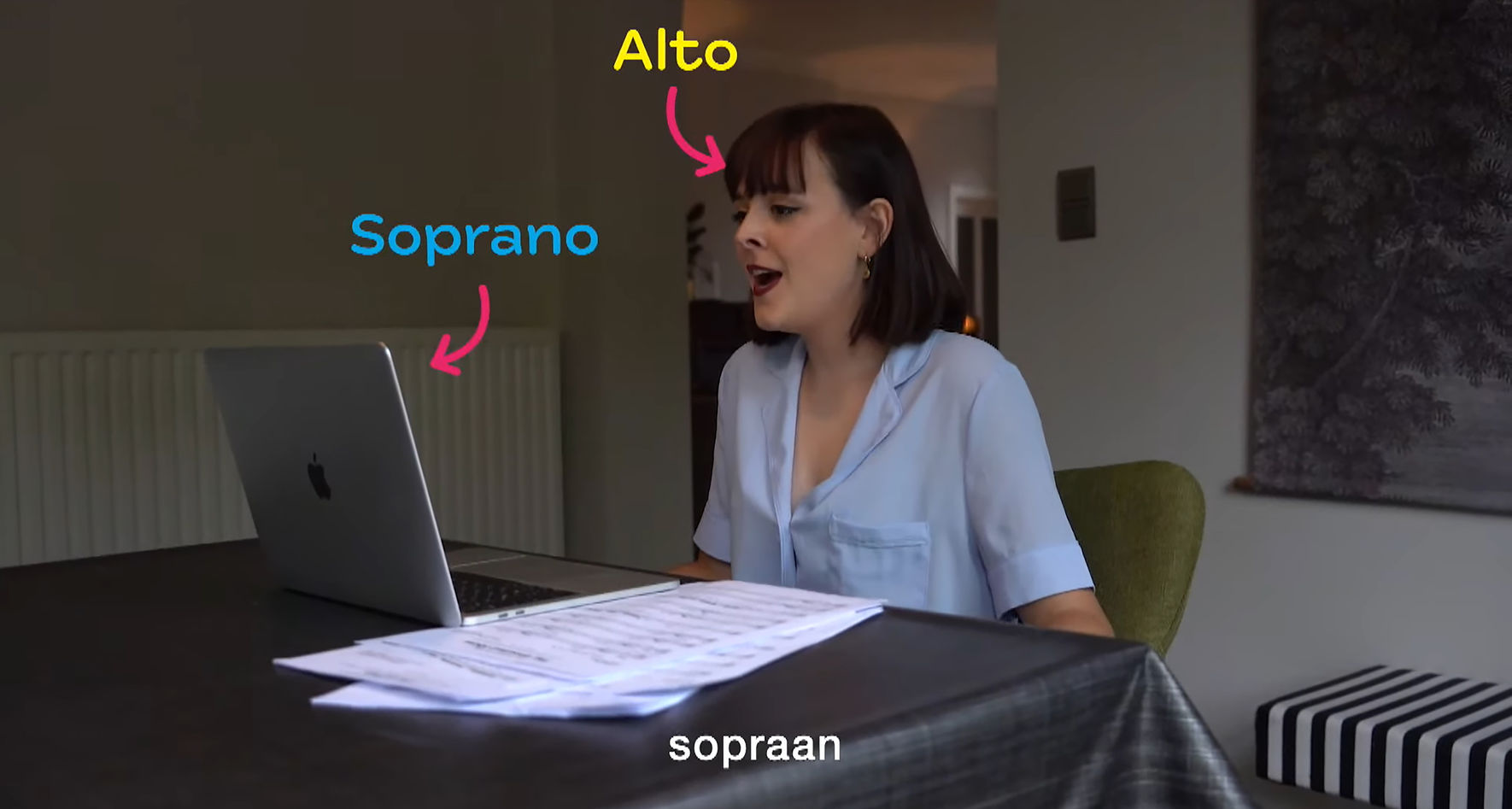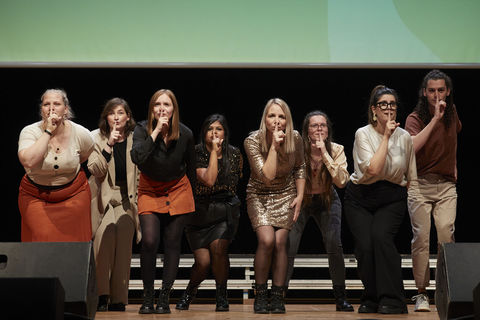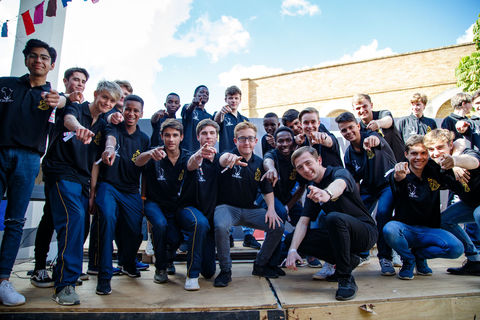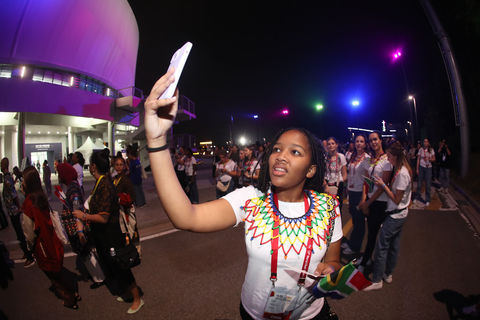
The Corona crisis and its effects on the choral world
2020 has shaped the (choral) world like never before
Around the turn of the year 2019/2020, the first news about the novel Corona virus reached the world. China in particular, but also numerous other countries, found themselves in a difficult situation and everyday life came to a standstill. The virus continued to spread and new infections were reported daily.
The Chinese city of Wuhan was hit hardest at the beginning of the year. But the rapid spread of Covid-19 soon meant that the entire world had to face the pandemic and all the challenges it entailed. This globe-spanning crisis had a profound impact on humanity - and the choral world in particular. We all had to keep our distance - and yet we have moved closer together - even across national borders!
And then there was silence…
The pandemic brought public and private life to a standstill. In many places, a state of emergency was declared and a lockdown imposed. Stores, restaurants and cultural institutions had to close, and schools and workplaces were moved home.
This life at a distance also hit the choirs of this world especially hard. Concerts, festivals and even choir rehearsals had to be cancelled or postponed and stages remained silent. In most countries, choral life has come to a complete standstill and many choirs and choirmasters have lost their financial support and perspective. Li Peizhi, president of the Chinese Choral Association, described the feeling of these drastic impairments of everyday life in an interview as a “train that comes to an abrupt halt”.
In all areas of life and also in choral work, the technical possibilities of our time and global networking with the help of the Internet gained completely new relevance and significance from one moment to the next. The choirs around the globe did not lose confidence and developed ideas to continue to live out their passion for choral music, to maintain their choral community together with their fellow singers, to stay positive and to break new ground in terms of rehearsals - and the silence of the choral world did not last long.
…but not for long
Tim Sharp, a member of the Advisory Board of the World Choir Council, wrote in an interview that “singing not only gives something to the listener, but also to the individual singer. Singing requires us to use our bodies and connects us directly to our emotional lives.
Every single aspect of the singing process is physical. And, while the experience of singing is highly individual, choral singing connects and harmonizes these individual sounds into a community.“
Music is a powerful, courage-giving force that connects people and inspires spirits. In many places around the world, music was played together just as the pandemic began. Neighborhoods sang together on their balconies, at their windows or on the street and grew closer. This community at a distance, this community in music and song, has also given hope to many people.
The choirs were particularly limited in their work and could only meet virtually. But they got creative and took advantage of the new technologies: choir rehearsals online, classes at home in the living room, virtual choir projects, video premieres instead of performances in concert halls.
Besides all these creative projects and new approaches to choral work, this time of special challenges has also brought the choral community closer together.
The (choral) world has come closer together
Of course, all these approaches and the virtual choir projects cannot replace the community of the choir and the experience of a live performance, but they have given confidence to the singers of this world. New ways were tried out to continue learning together and to continue singing together.
With the help of workshops, online tutorials or direct exchange in social networks or forums, choirs and choir directors helped and supported each other.
Following INTERKULTUR‘s motto “Singing together brings nations together”, many choirs have also used these projects and collaborations to come together virtually with other choirs from all corners of the world.
The new possibilities of technologies were used extensively and became a popular tool to overcome creative self-isolation, which also affected the rehearsal process. Even though synchronous singing and choral rehearsals in large groups are technically impossible or difficult, the digital applications are a good opportunity to maintain social contacts and community.
Li Peizhi, president of the Chinese Choral Association, said in an interview, “I think people, and especially musicians, are using their ability and energy to express and transmit their emotions and their thoughts. [The] projects are wonderful because the message they send out is consistently positive and has made people realize the great power of music.”
This bond and solidarity that has united the choral world in recent months, even if only virtually, will hopefully accompany us in the future and we should continue to cherish it. What will the new normal look like
after the pandemic?
The questions that now arise at the beginning of the new year, as vaccinations begin worldwide and (hopefully) with the end of the crisis in sight: What are the lessons we learn from this crisis? What impact will these experiences have on the choral world and how will choral work change?
Russian choral legend Vladimir Minin commented on this in an interview: “Digital technologies are a temporary means, a way out, a tool for information exchange - but nothing more. No technology can convey the living energy of the choir, and the subtle intricacies of the movement of its collective soul.“
Li Peizhi, President of the Chinese Choral Association, has a similar view: “These new forms of singing and online lectures are currently very popular all over the world. I personally think that this is a special countermeasure in a special time to satisfy the strong desire for singing. Choral singing is a fantastic way for people to communicate emotions, but this requires contact and time to rehearse. Therefore, it‘s imperative that we experience the artistic engagement that occurs in actual rehearsals to unleash the full beauty and charm of the choral art.“
Tim Sharp, a member of the Advisory Board of the World Choir Council, hopes “to be able to use these tools when we sing together again. I firmly believe that we will emerge from this time stronger, and we will also have learned how to teach and communicate with new tools that are appropriate for choral music education, performance, composition, and advocacy.”
Digital technologies are good and valuable tools for the current time and they will certainly be able to enrich choir work in certain areas in the future. However, it is also clear for the choral world that the virtual will not be the new normal. What is missing is the interpersonal aspect, the dynamics, the immediate communication with fellow singers - the essence of singing together that we all sorely miss.
We don‘t know what the future will look like, but we are confident that it will be beautiful and, above all, full of singing!
(by Franziska Hellwig)



